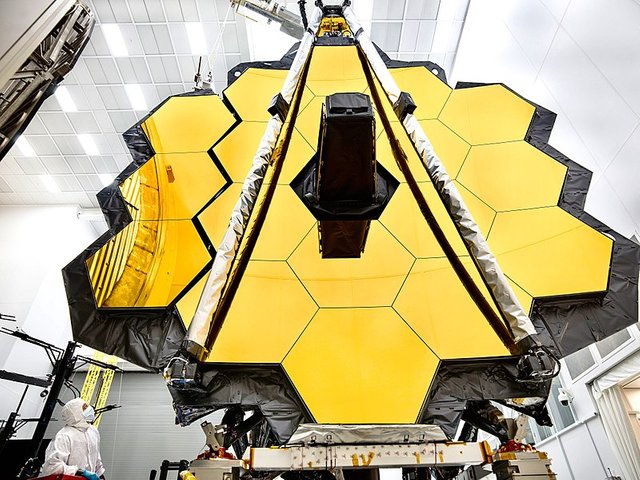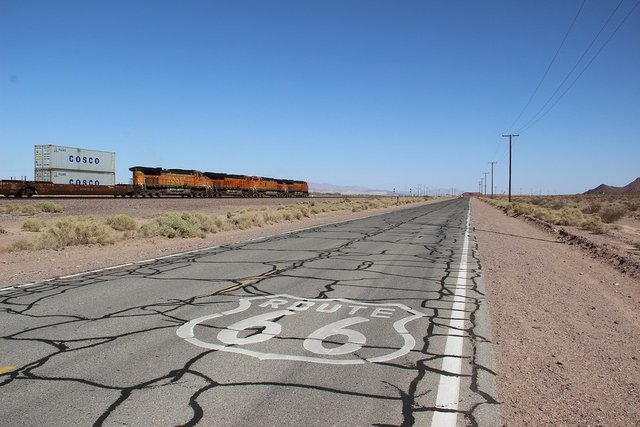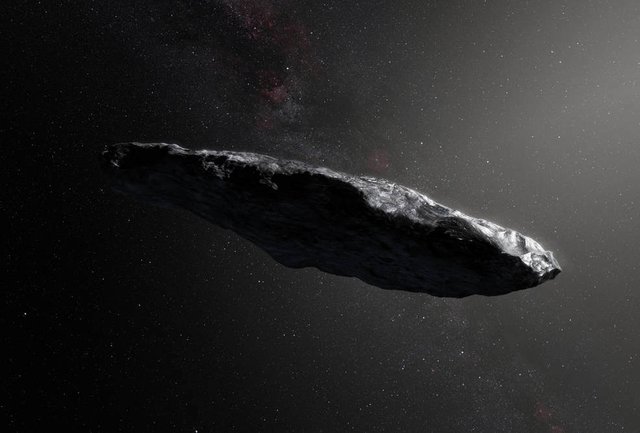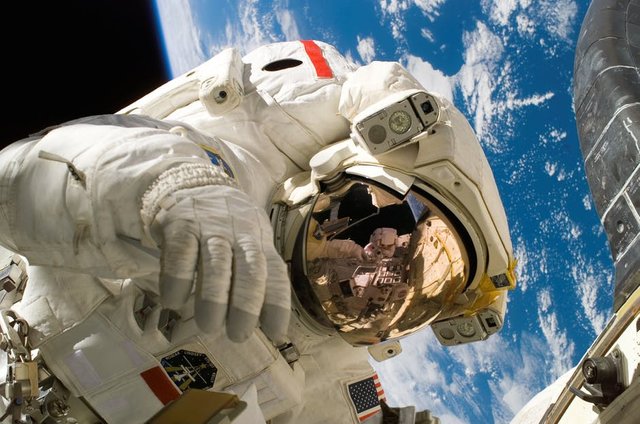Da Vinci Times #15.4
New delays for the James Webb telescope
NASA’s new telescope,is the most powerful ever built and it will be launched in 2021. Its’ departure was scheduled for 2018, but a series of technical delays has forced its’ engineers to carry out other tests, with an obvious increase in costs.

Imagine CC0 Creative Commons - Source
It is sometimes called “the successor to Hubble”, but in fact James Webb will always be a complementary telescope. It shall allow us to see its’ best results in an observation of infrared wavelengths, allowing us to study the universe with detail never before accomplished until now. To date, the cost of this telescope is around 8 billion dollars, but estimates indicate that the next three-year delay in upgrades will cost around 800 million dollars. A considerable cost, which will be partially covered by NASA, and which therefore will reduce funds for other projects, with obvious repercussions in scientific research.
The asphalt that repairs itself
A group of Dutch researchers managed to repair pieces of asphalt using an innovative technology. This technology could possibly solve the problem of deterioration with regards to the road surface, which especially in winter due to hazardous conditions causes damage to the means of automotive transport.

Imagine CC0 Creative Commons - Source
The following technique developed by the researchers consists in inserting aluminum fibers within asphalt, which can be achieved by heat using a special machine. The fibers can be heated up to the melting temperature of the bitumen, which, once it melting point , penetrates into the cracks of the asphalt, which results in them closing. According to researchers, producing an asphalt of this type costs 25% more than normal. Considering the costs for maintenance, however, it is clear that this technology is convenient, because it allows the final consumer to double the average life of the asphalt.
It is "only" a comet...
In last few months we have seen a long debate regarding the nature of the interstellar objects known as "Oumuamua", as defined by some it is a comet and by others as an asteroid. The recent data published in an article published in Nature now gives us a clear explanation.

Imagine CC0 Creative Commons - Source
A clear division between comets and asteroids is not always possible, and even more rare is an easy or precise undertaking. Oumuamua has been now definitively classified as a comet thanks to a series of calculations made possible through to the use of the ESA telescopes; it seems that its’ movement is not attributable solely to gravitational forces (typical of asteroids), but there could be an acceleration produced from the emission of gases of Oumuamua itself!
Article source
Post of the day

Imagine CC0 Creative Commons - Source
Many of us could tell that when they were young, at least one they answered the question of an adult with the phrase "I want to be an astronaut"! Nowadays, even if space continues to fascinate us, it is clear that it is a place that, in addition to the many wonders, also hides many dangers; today @anomalogy tries to tell us which ones.

Immagine CC0 Creative Commons, si ringrazia @mrazura per il logo ITASTEM.
CLICK HERE AND VOTE FOR DAVINCI.WITNESS
Keep in mind that for organizational reasons it’s necessary to use “steemstem” and “davinci-times” tags to be voted.
@zest - @spaghettiscience - @rscalabrini
Ancora ritardi per il James Webb telescope
Il nuovo telescopio della Nasa, il più potente mai lanciato, sarà lanciato nel 2021. La sua partenza era prevista per il 2018, ma una serie di ritardi e imprevisti tecnici costringono gli ingegneri ad effettuare altri test, con un ovvio aumento dei costi.

Imagine CC0 Creative Commons - Source
Viene talvolta definito come il successore di Hubble, ma in realtà James Webb sarà un telescopio ad esso complementare. Darà il meglio di sè nell’osservazione a lunghezze d’onda infrarosse, permettendo di studiare l’universo con un dettaglio mai raggiunto fino ad ora. Ad oggi la spesa per questo telescopio si aggira attorno agli 8 miliardi di dollari, ma le stime indicano che il ritardo di tre anni costerà ben 800 milioni di dollari. Una spesa notevole, che verrà in parte coperta dalla NASA, che toglierà fondi ad altri progetti, con ovvie ripercussioni sulla ricerca scientifica.
L’asfalto che si ripara “da solo”
Un gruppo di ricercatori olandesi è riuscito a riparare pezzi di asfalto con una tecnologia innovativa. Questa tecnica potrebbe risolvere il problema del deterioramento del fondo stradale, che soprattutto in inverno causa danni ai mezzi di trasporto.

Imagine CC0 Creative Commons - Source
La tecnica sviluppata dai ricercatori consiste nell’inserire all’interno dell’asfalto delle fibre di alluminio, che possono essere scaldate tramite un apposito macchinario. Le fibre possono essere portate fino alla temperatura di fusione del bitume, che sciogliendosi penetra nelle crepe dell’asfalto, chiudendole. Secondo i ricercatori produrre un asfalto di questo tipo costa il 25% in più rispetto a quello normale. Considerano le spese per la manutenzione però, è chiaro che questa tecnologia conviene, perchè permette di raddoppiare la vita media dell’asfalto.
È “solo” una cometa…
Nei mesi scorsi abbiamo assistito ad un lungo dibattito circa la natura dell’oggetto interstellare “Oumuamua”, definito da alcuni come una cometa e da altri come un asteroide. I dati recenti appena mostrati in un articolo pubblicato su Nature sembrano ora dare ragione ai primi.

Imagine CC0 Creative Commons - Source
Una netta divisione tra comete e asteroidi non è sempre possibile, e ancora più raramente si dimostra un’impresa facile o precisa. Oumuamua è stata definitivamente classificata come cometa in quanto da una serie di calcoli resi possibile grazie all’impiego dei telescopi dell’ESA è risultato che il suo moto non è attribuibile unicamente a forze gravitazionali (tipiche degli asteroidi), ma sarebbe presente una accelerazione prodotta dall’emissione dei gas di Oumuamua stessa.
Article source
Post del giorno

Imagine CC0 Creative Commons - Source
Molti di noi potrebbero raccontare che, almeno una volta, quando erano piccoli, hanno risposta alla domanda di un adulto con la frase “io voglio fare l’astronauta”! Eppure, per quanto lo spazio continui ad affascinarci, è chiaro che si tratti di un posto che oltre alle tante meraviglie nasconde anche molti pericoli; oggi @anomalogy prova a raccontarci quali.

Immagine CC0 Creative Commons, si ringrazia @mrazura per il logo ITASTEM.
CLICK HERE AND VOTE FOR DAVINCI.WITNESS
Si ricorda che per motivi organizzativi è necessario utilizzare le tag “steemstem” e “davinci-times” per essere votati.
@zest - @spaghettiscience - @rscalabrini
Hi @davinci.times!
Your post was upvoted by utopian.io in cooperation with steemstem - supporting knowledge, innovation and technological advancement on the Steem Blockchain.
Contribute to Open Source with utopian.io
Learn how to contribute on our website and join the new open source economy.
Want to chat? Join the Utopian Community on Discord https://discord.gg/h52nFrV